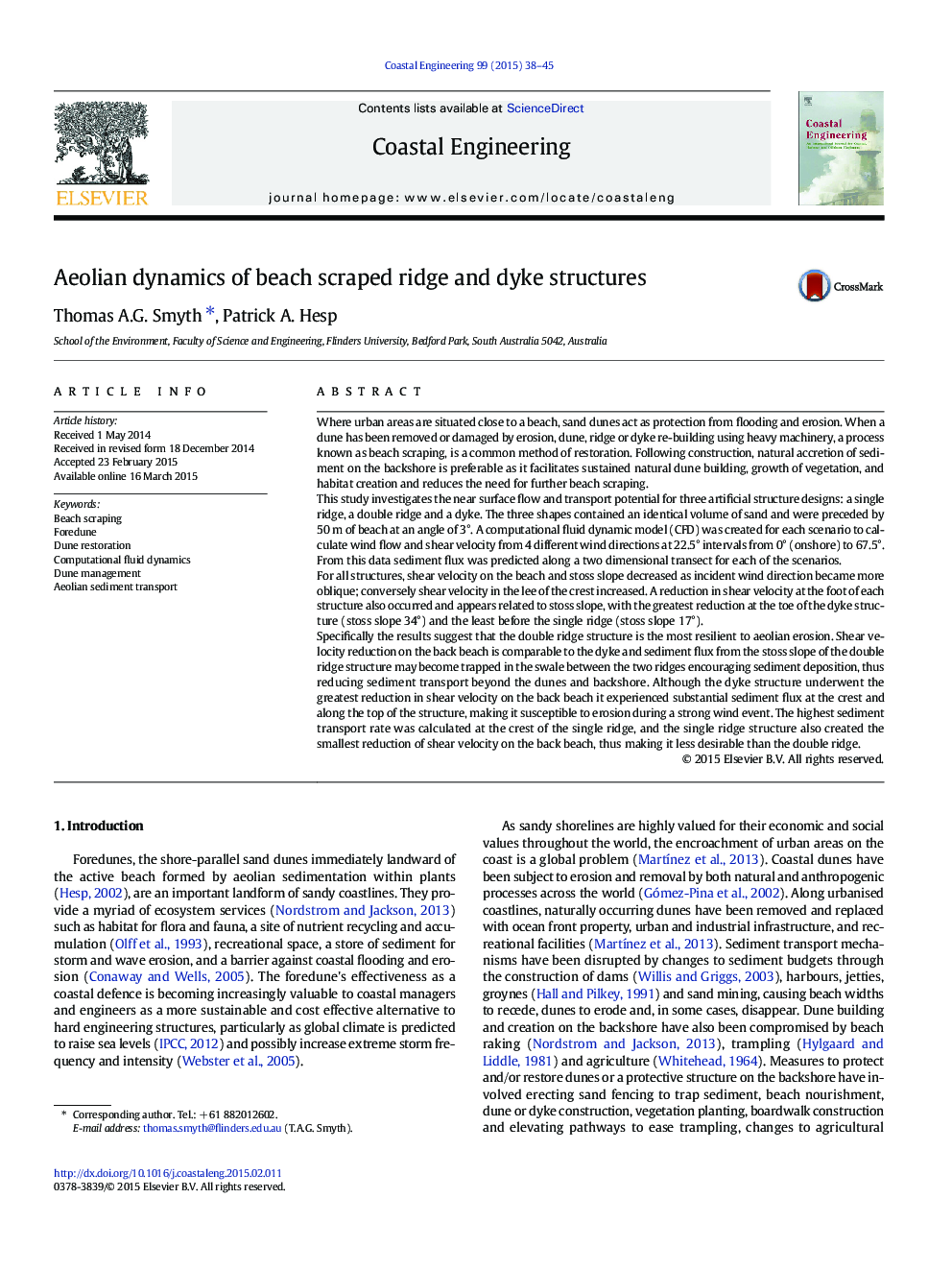| کد مقاله | کد نشریه | سال انتشار | مقاله انگلیسی | نسخه تمام متن |
|---|---|---|---|---|
| 1720660 | 1520355 | 2015 | 8 صفحه PDF | دانلود رایگان |

• Beach scraping by machinery forming artificial dunes is common practice on eroding shorelines.
• There has however been no systematic consideration of aeolian processes on these landforms.
• Wind flow and shear velocity was CFD modelled over three dune ridge shapes during 4 wind direction scenarios.
• Sediment transport was predicted using shear velocity for each dune shape.
• Results indicate that a double dune ridge is the most resilient structure to erosion by aeolian processes.
Where urban areas are situated close to a beach, sand dunes act as protection from flooding and erosion. When a dune has been removed or damaged by erosion, dune, ridge or dyke re-building using heavy machinery, a process known as beach scraping, is a common method of restoration. Following construction, natural accretion of sediment on the backshore is preferable as it facilitates sustained natural dune building, growth of vegetation, and habitat creation and reduces the need for further beach scraping.This study investigates the near surface flow and transport potential for three artificial structure designs: a single ridge, a double ridge and a dyke. The three shapes contained an identical volume of sand and were preceded by 50 m of beach at an angle of 3°. A computational fluid dynamic model (CFD) was created for each scenario to calculate wind flow and shear velocity from 4 different wind directions at 22.5° intervals from 0° (onshore) to 67.5°. From this data sediment flux was predicted along a two dimensional transect for each of the scenarios.For all structures, shear velocity on the beach and stoss slope decreased as incident wind direction became more oblique; conversely shear velocity in the lee of the crest increased. A reduction in shear velocity at the foot of each structure also occurred and appears related to stoss slope, with the greatest reduction at the toe of the dyke structure (stoss slope 34°) and the least before the single ridge (stoss slope 17°).Specifically the results suggest that the double ridge structure is the most resilient to aeolian erosion. Shear velocity reduction on the back beach is comparable to the dyke and sediment flux from the stoss slope of the double ridge structure may become trapped in the swale between the two ridges encouraging sediment deposition, thus reducing sediment transport beyond the dunes and backshore. Although the dyke structure underwent the greatest reduction in shear velocity on the back beach it experienced substantial sediment flux at the crest and along the top of the structure, making it susceptible to erosion during a strong wind event. The highest sediment transport rate was calculated at the crest of the single ridge, and the single ridge structure also created the smallest reduction of shear velocity on the back beach, thus making it less desirable than the double ridge.
Journal: Coastal Engineering - Volume 99, May 2015, Pages 38–45